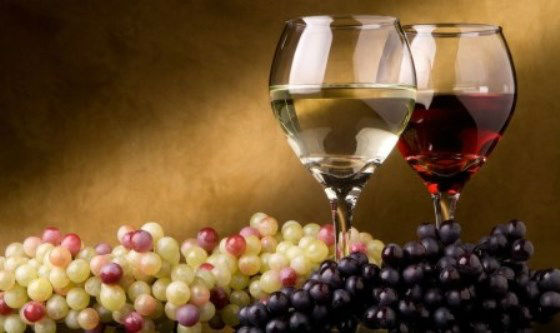A simple article to cover the basics of wine.
What is wine?
Wine has been made for centuries from just a two simple ingredients: yeast and grape juice. Actually, just about any fruit juice can be used, but by far the majority of all wine is made from the juice of the grape.
How is wine made?
Yeast is the magical ingredient that turns grape juice into wine. Interestingly enough, there is actually wild yeast spores in the air and all that is really needed to make wine is an open container of grape juice and time. The result however, would probably not be the most palatable of beverages.
There are numerous strains of yeasts and the types used to make wine have been cultured just for this purpose. Well anyway, yeast is a living organism that feeds off of sugars in the grape juice in a process called fermentation.
During fermentation, yeast spores will reproduce exponentially until all of the fermentable sugars have been consumed. During this fermentation process, the sugars are converted into alcohol and carbon dioxide.
The yeast will also impart a taste to the finished wine depending on various factors such as the strain of yeast used, the temperature during fermentation and other factors.
Once all of the fermentable sugars have been consumed, the yeast will fall to the bottom of the container. The wine is removed from the container, leaving the yeast, and is transferred to another container to mature while waiting to be bottled.
Of course, this whole process has been extremely simplified for a general understanding.
How does wine get its color?
You probably know that there are green grapes and black grapes and different grapes are used to make different wines.
What you might not know is that almost all grape juice (even from the black grapes) is basically colorless to golden in color.
The way a wine gets its color is by letting the skins soak in the juice during fermentation. You can actually make white wine from black grapes by not letting the skins stay in contact with the juice. Champagne is one of the most famous examples.
If the skins are left in the wine for only a short amount of time, a rose (or blush) will be made. If they are left for an extended amount of time, a dark red wine will be the result.
What gives each wine its taste?
Even though there are very few ingredients, there are many things which influence the taste of wine. First of all, there are many varieties of grapes. Each grape variety will produce different flavors, aromas, and even textures.
In addition, the soil and climate where the grapes are grown drastically affect these variables.
Not only that, but the wine maker can control various things by the technique, temperature and yeast used during fermentation. Other variables such as fermenting or storing in oak barrels will also affect the taste.
Never fear, with all of these factors considered even the most avid wine drinker would ever be able to experience all of the different varieties of wine on the market today. Let the treasure hunting begin!
What is tannin?
Tannin is a substance in wine that causes a firm, mouth-drying feeling in your mouth. It is extracted from the skins, seeds and stems of the grapes so red wines will contain more tannin than whites.
White wines will get a degree of tannin when oak barrels are used for fermentation or aging. Eat just the skins of grapes or drink strongly brewed, unsweetened tea for a good idea of what tannin feels like in your mouth.
What are sulfites?
By law, almost all wine made in the United States will have “Contains Sulfites” on the label. This is because about very small percentage of asthma sufferers can be extremely sensitive to sulfites.
Sulfites or sulfur dioxide is a compound occurring naturally during the fermentation process. Sometimes, though a wine maker will add a little more because of its antibacterial and preservative qualities. White wines have more sulfites than red wines because they need more protection.


